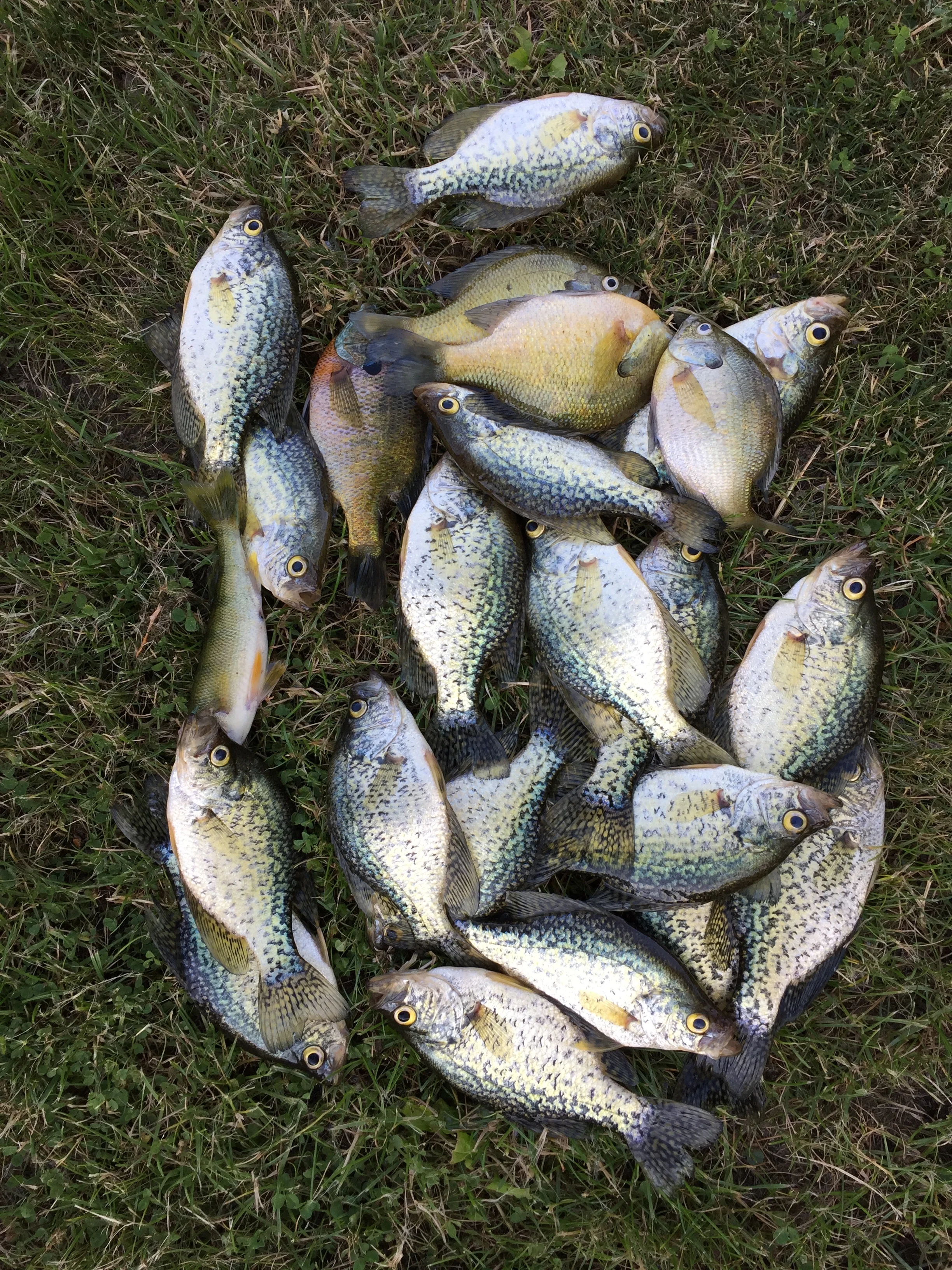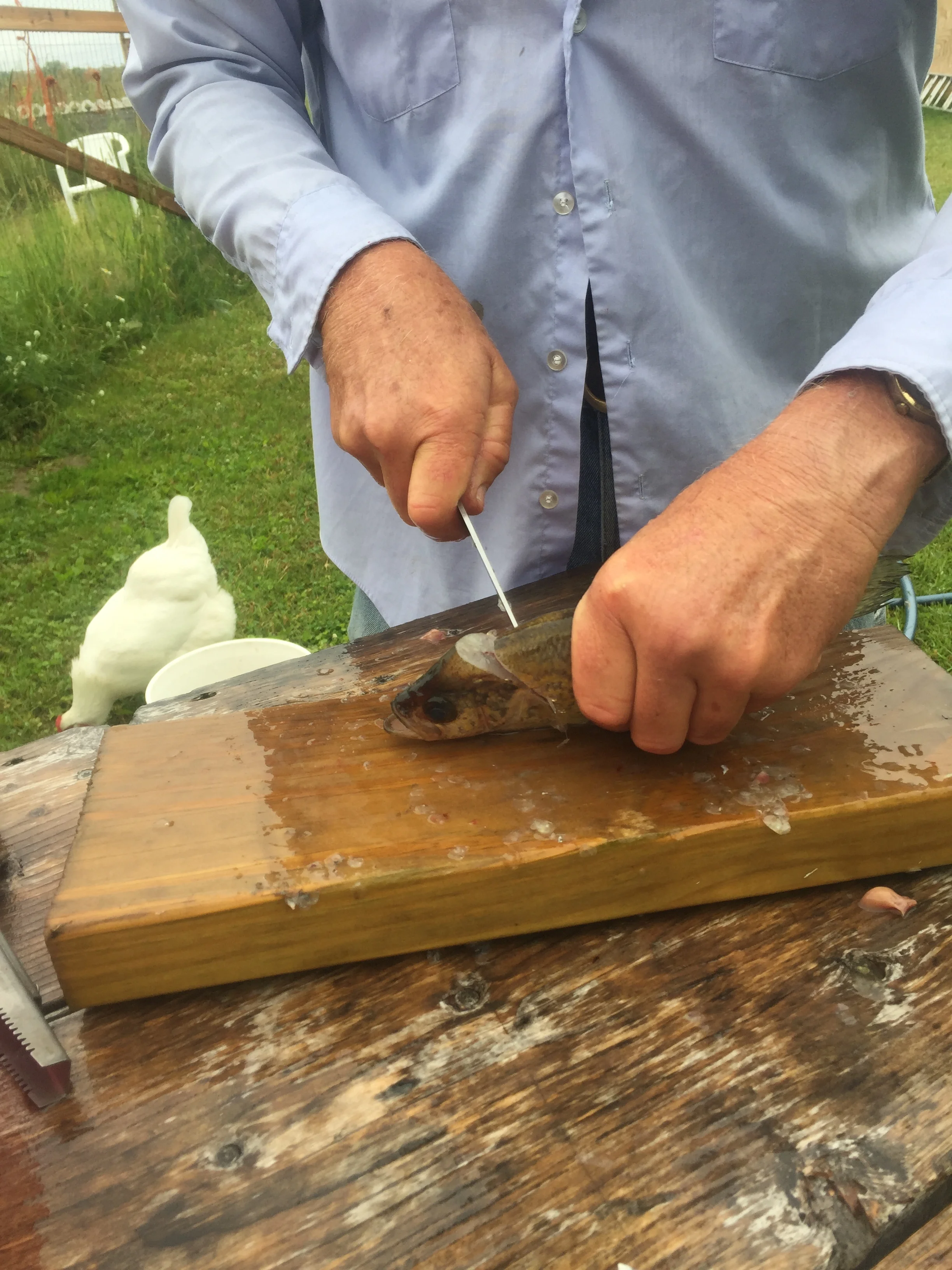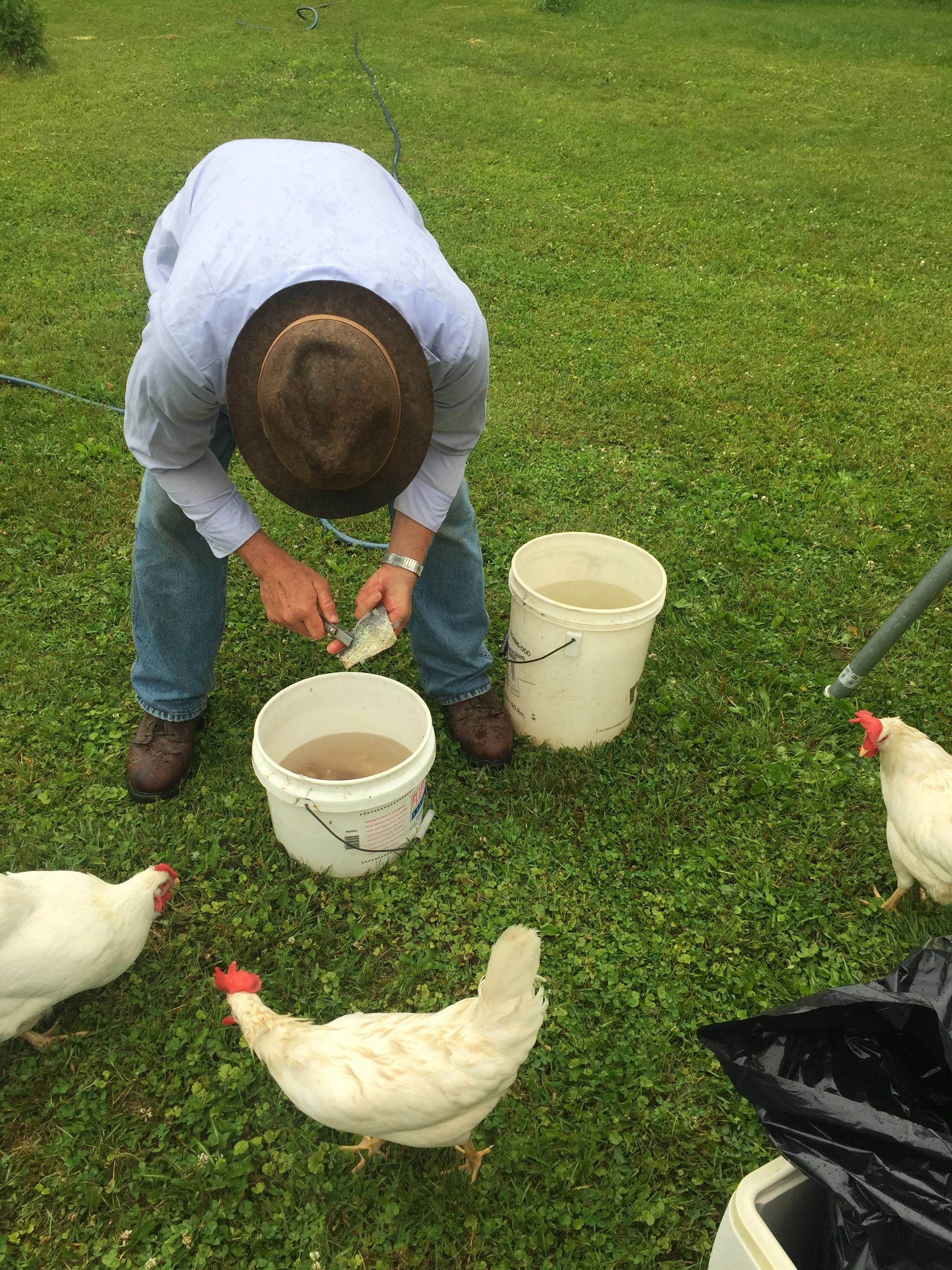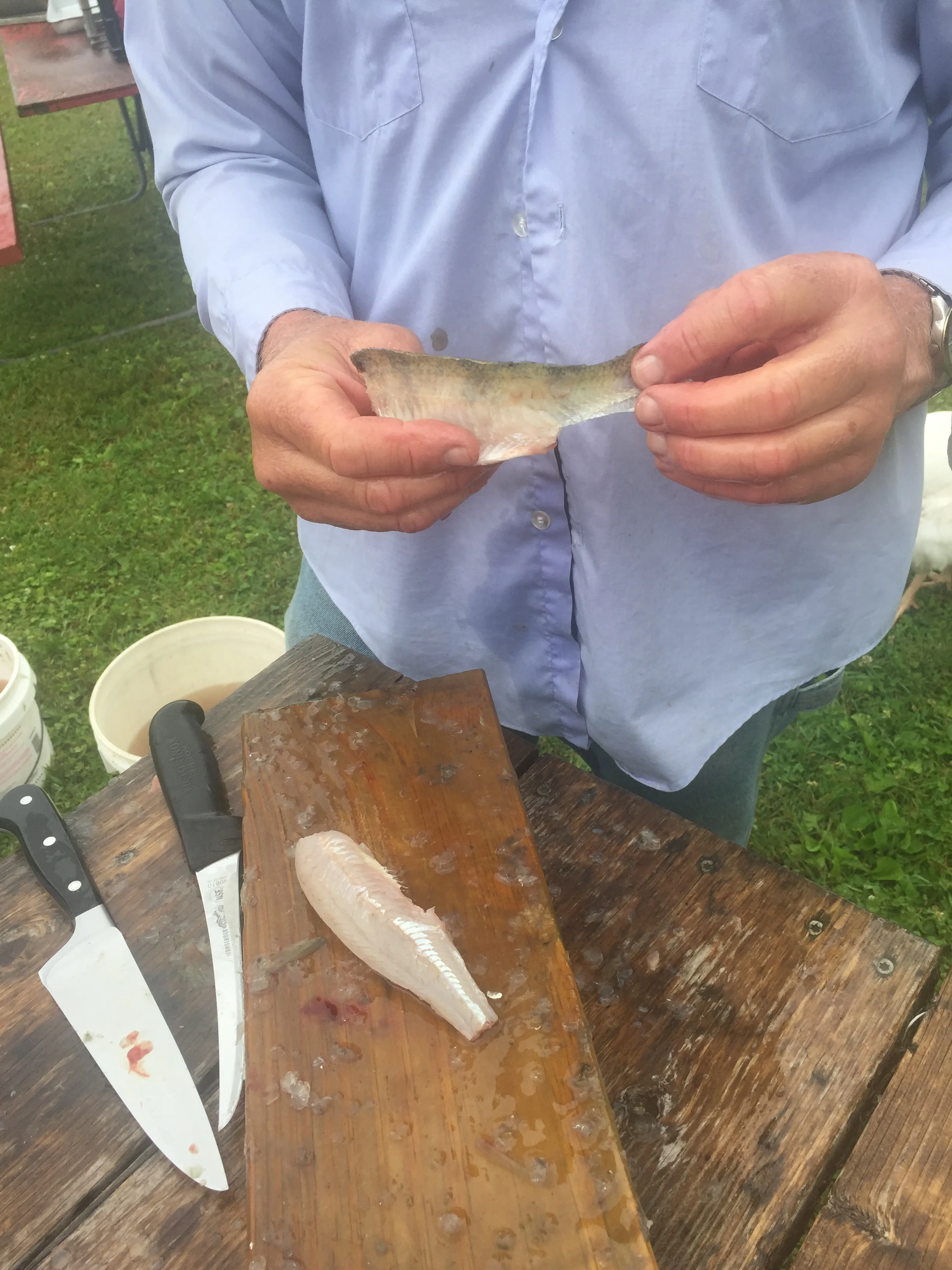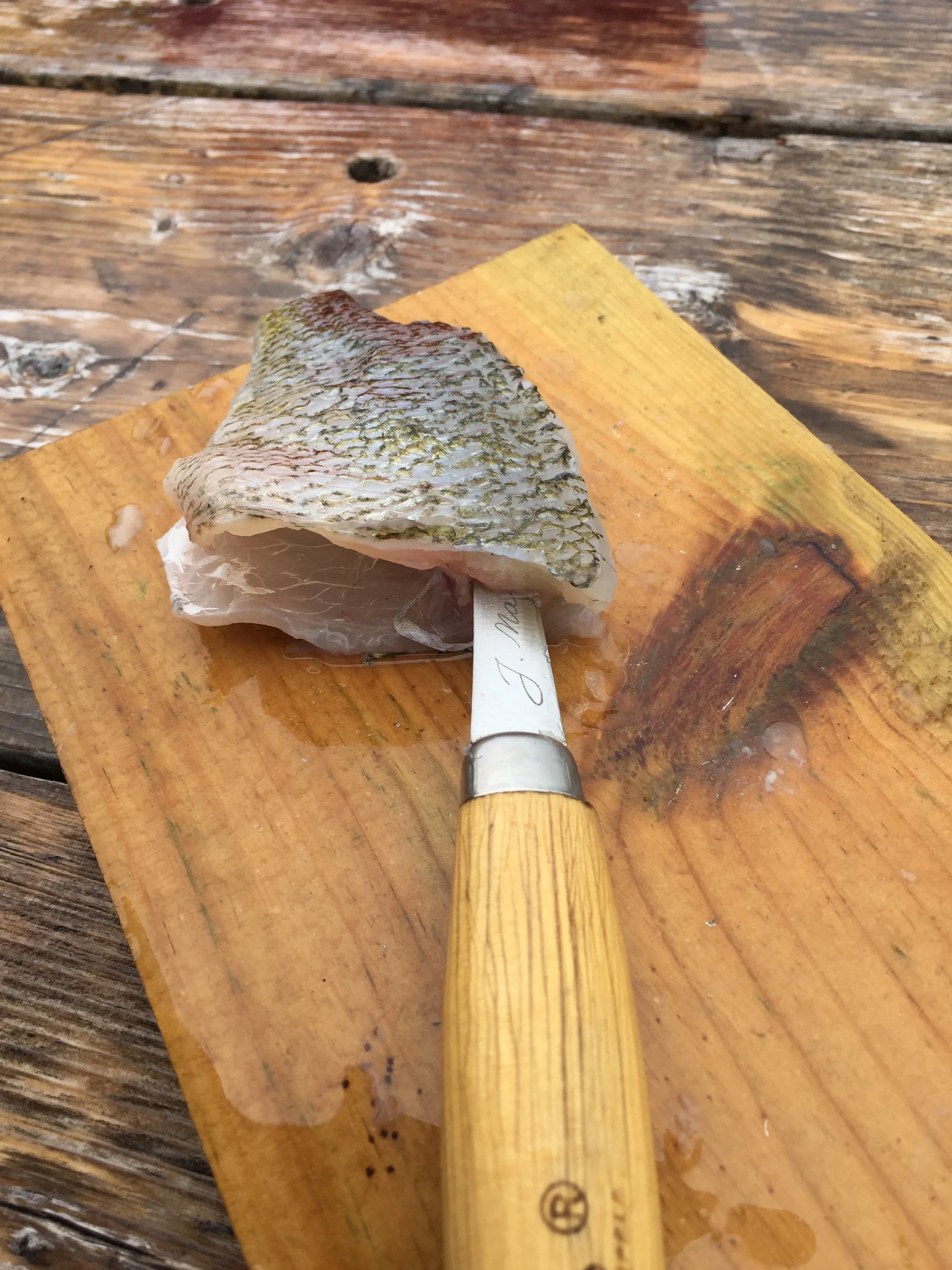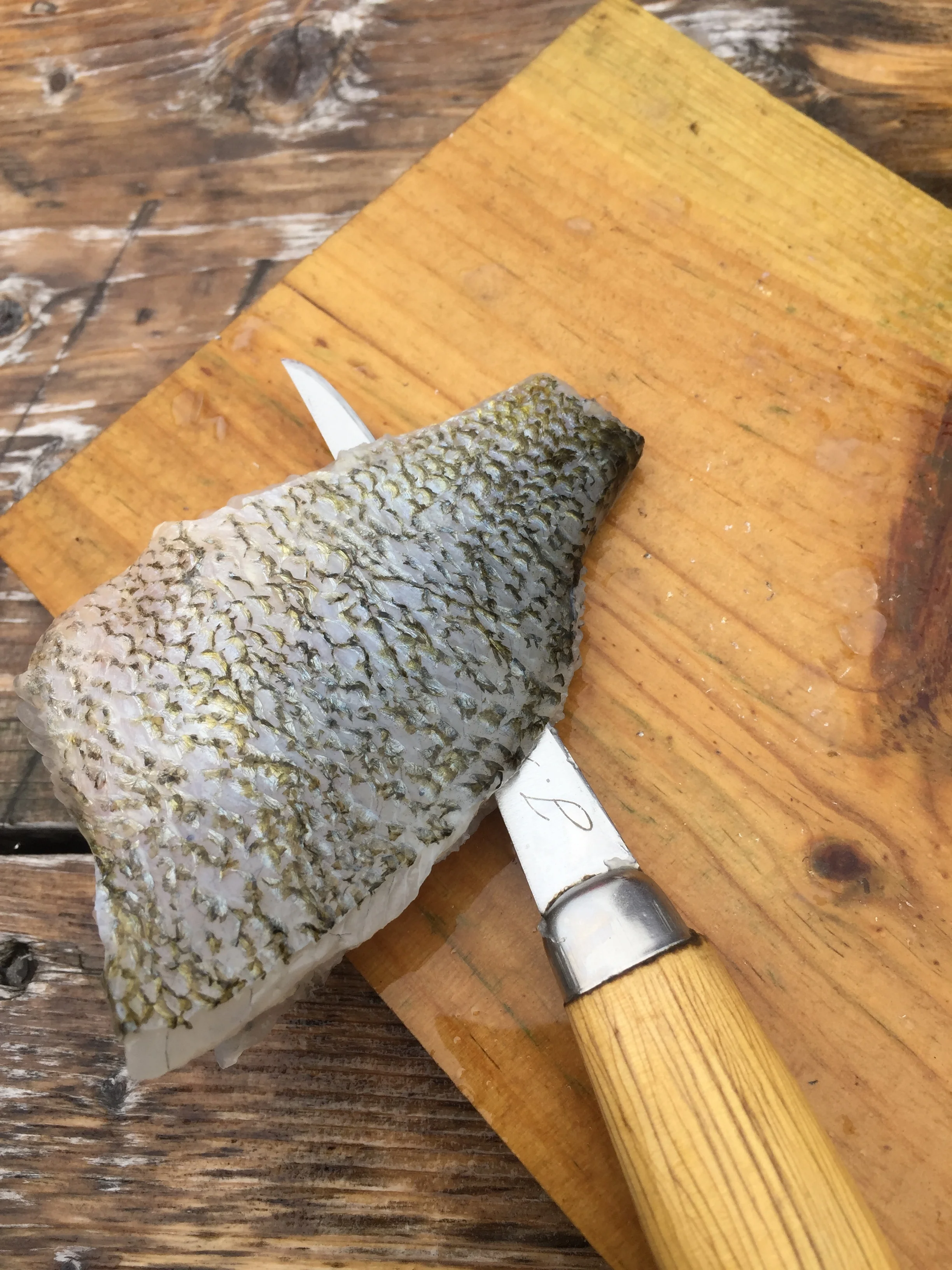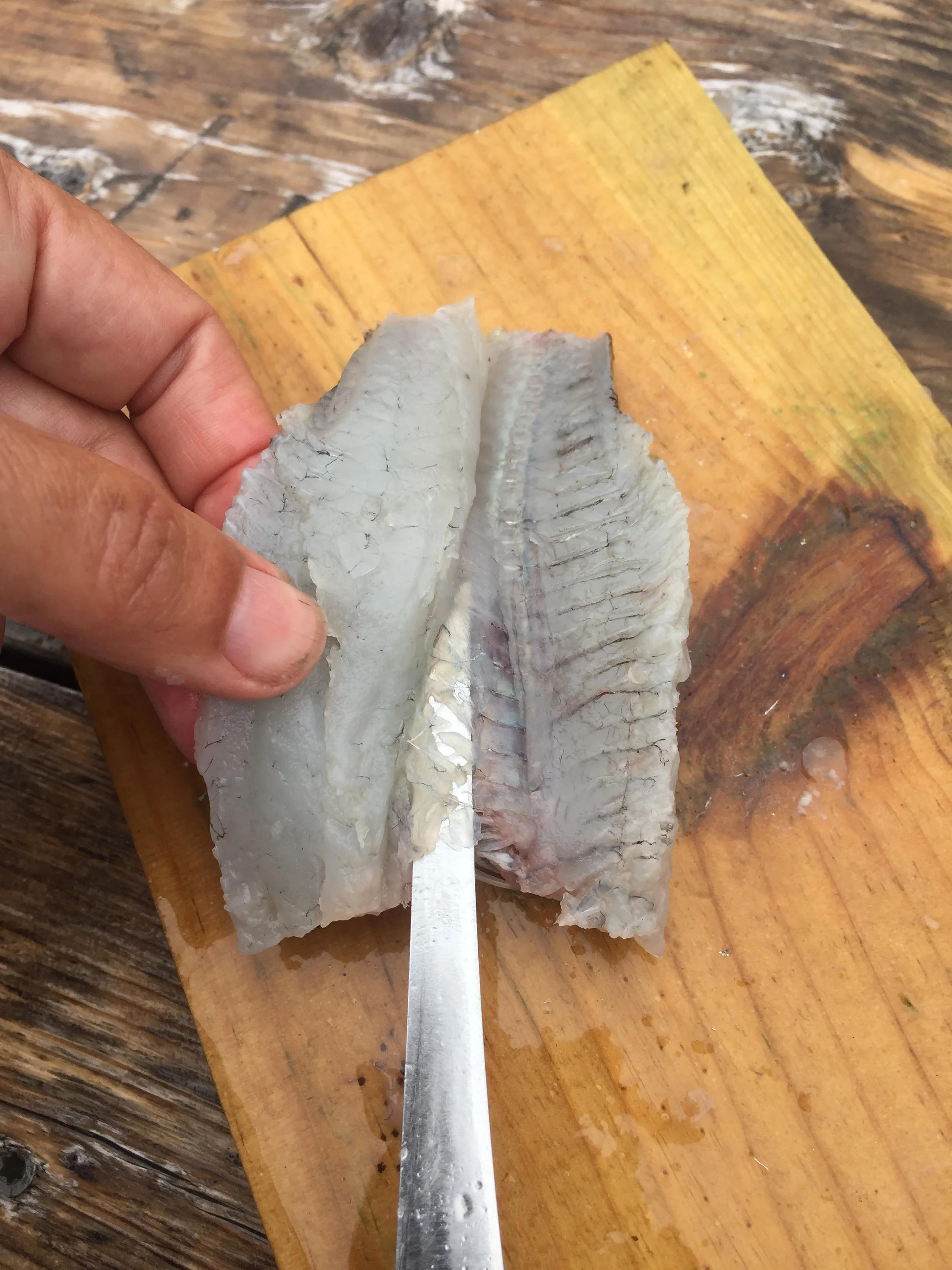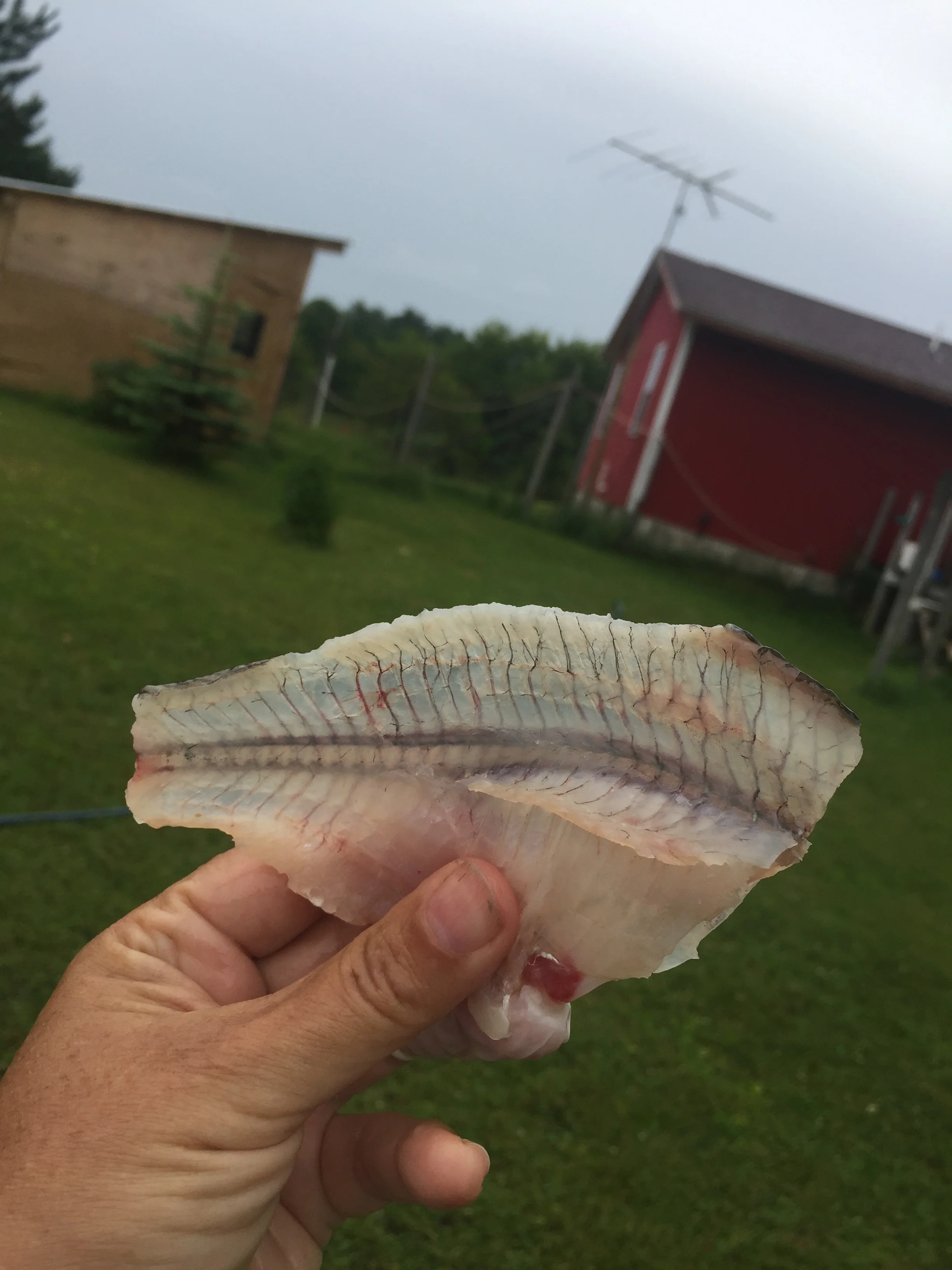Fishing journal: we aren't the catch and release types
I spent most of yesterday slaving over a keyboard. Michael rewarded me with an afternoon spent fishing. (He had been slaving over a hot stove. More on that later.) At the boat ramp we chatted with a family just coming off the lake. They reported they had caught a lot of sunfish and crappies, but threw them back. We aren't that way.
18 crappies, 4 sunnies and 1 yellow perch
I don't understand people who fish for fun but don't eat the fish the catch. But I've also fed fish to people who say they don't like fish...but like mine. Maybe it's because I fillet them, so there are no small bones to battle. For anyone interested, here is our method of cleaning pan fish:
Equipment is important. Two sharp knives are handy-a filet knife and a chef's knife. A scaler. Two bowls and two buckets, all with water in them. A table to work on.
Michael starts the process by taking the heads and fins off with the chef's knife, and gutting the fish.
The yard chickens get the fish livers and roe.
He then scales the fish into one of the buckets, and the other bucket is to rinse off in between fish.
Some people would consider this the end of the process. Not us.
The exception to the scaling step is the yellow perch. They are armored against northern pike and do not willingly give up their scales. So they simply get skinned.
Yellow perch are cousins to walleye
Michael puts the scaled or skinned fish in a bowl for me and I fillet them.
First run the knife down the backbone and slide up the dorsal bones.
Next slide the knife in across the end of the gut cavity and slide against the bones toward the tail end.
After a bit of practice, you can do these two steps in one smooth motion.
There are a set of small bones running laterally down the rib cage. I cut down to them, then slide the knife under them and cut toward the skin until they release, then finish separating the belly meat from the ribs.
This is all it takes to make a boneless fillet. Repeat for the other side.
8 fillets makes dinner for 3, which means we processed enough for about 5-6 dinners, one of which we had tonight!
You know you've done well if what remains looks like this:
I suppose we could make fish sauce from the heads and bones, but Michael buries them in the garden instead.
It is difficult to find anywhere to eat out that has better food than we have at home. Maybe it is because when I eat fish at home, I relive a little of the sunshine, scent of wildflowers and new mown hay, and the gentle rocking of the canoe.
